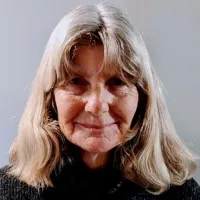
Salt - what is does and why it matters
Sodium is one of the most important minerals. It is required by all mammals to function normally and remain healthy. Our forage plants don’t need sodium to grow, but any sodium in the soil can be taken up by plants and then passed on to the animal grazing on the plants.
The problem New Zealand farmers have is that many of our soils are very low in sodium. This means our farm animals don’t get enough salt from the pasture and need supplementation.
Which areas of New Zealand are sodium deficient?
The Central Plateau which has pumice soils.
The volcanic soils of the Waikato/King Country.
Inland Canterbury, Marlborough, Otago and Southland.
As you can see, this takes up quite a chunk of the country. Coastal areas, which are prone to salt spray from the sea, are not as deficient as those inland.
Why do our livestock need salt?
Salt, which is made up of sodium and chloride, also contains magnesium, calcium, selenium and phosphorus. It is the sodium that is so vital for the health of our farm animals.
In New Zealand, our soils are not calcium deficient, but extra calcium is needed for lactation and growth.
What does sodium do?
Balances the pH levels in the blood.
Regulates blood volume and pressure.
What does chloride do?
Balances the acid levels and helps with digestion.
What does calcium do?
Keeps the heartbeat regular.
Helps with blood clotting.
Keeps the nervous system functioning properly.
How do animals get salt?
In the wild, animals will seek out rocks or ground that naturally contain salt. Areas where animals congregate for salt are known as salt licks and is probably where we get the terminology used for our salt blocks that we offer our livestock.
What are the signs that my livestock are salt deficient?
The signs may include:
Loss of appetite.
Consumption of dirt, wood, rock or faeces.
Failure to thrive.
How much salt do my animals need?
The amount of salt needed by our farm animals (in areas where salt is deficient) will vary according to age, their water intake, the type of pasture, the time of the year and what phase of growth the animal is in. Growing animals have a higher intake need as do lactating animals.
How do we provide enough salt for our farm animals?
For sheep, cattle, deer, goats and camelids, the easiest way is to offer ad-lib access to salt blocks. These come in different forms and can be found at rural supply stores and some vets.. Some blocks are in the form of a mineral block and will have copper and other minerals added. Others are just plain salt blocks - such as Himalayan salt. If you have Texel sheep, care needs to be taken with the multi mineral blocks as Texels are sensitive to copper overload.
Some blocks are designed to sit on the ground, while others can be hung on a rope. Multi mineral blocks can range in size from 2.5kg to 20kg. “Little Lix” are a good alternative when you only have a few animals. It is a good idea to have the blocks near by troughs or the animal’s water source as this is where they will always go and so are more likely to use the salt lick at the same time they go to drink.
Horses will tend to use their salt lick less if they are being hard fed, as most commercial feeds should have the right amount of sodium in them. Likewise, pigs that are being raised on specific commercial pig foods, should also have an adequate sodium intake.
The best way to find out the sodium levels on your property is to have soil tests done. Then you have a definitive level and can plan accordingly for supplementation.
Salt can also be provided as a loose mixture, with or without added minerals. These should not be added to feed but offered separately as a supplement.
Practical considerations

It is worth noting that where your block sits, the grass will never grow again, so ideally placing the block in a plastic tray that has holes in it for drainage is a good idea.
Sadly, animals do not respect the blocks and will climb on them, urinate and defecate on them and generally misuse them. Just keep an eye on the blocks and clean them off as necessary.
Rain will dissolve salt blocks so cover them up if there are no livestock in the paddock or move them along with the livestock.
Loose salt licks can be fed in a gravity feeder made from part of a downspout.
Given our deficient soils and the importance of salt in the diet, it’s worth getting your soil checked and ensuring you’re supplementing as appropriate. The more you can do to support the health of your animals, the easier your life will be.
For more great information on looking after livestock check out our courses.
© 2024 LSB Ltd. All Rights Reserved.



